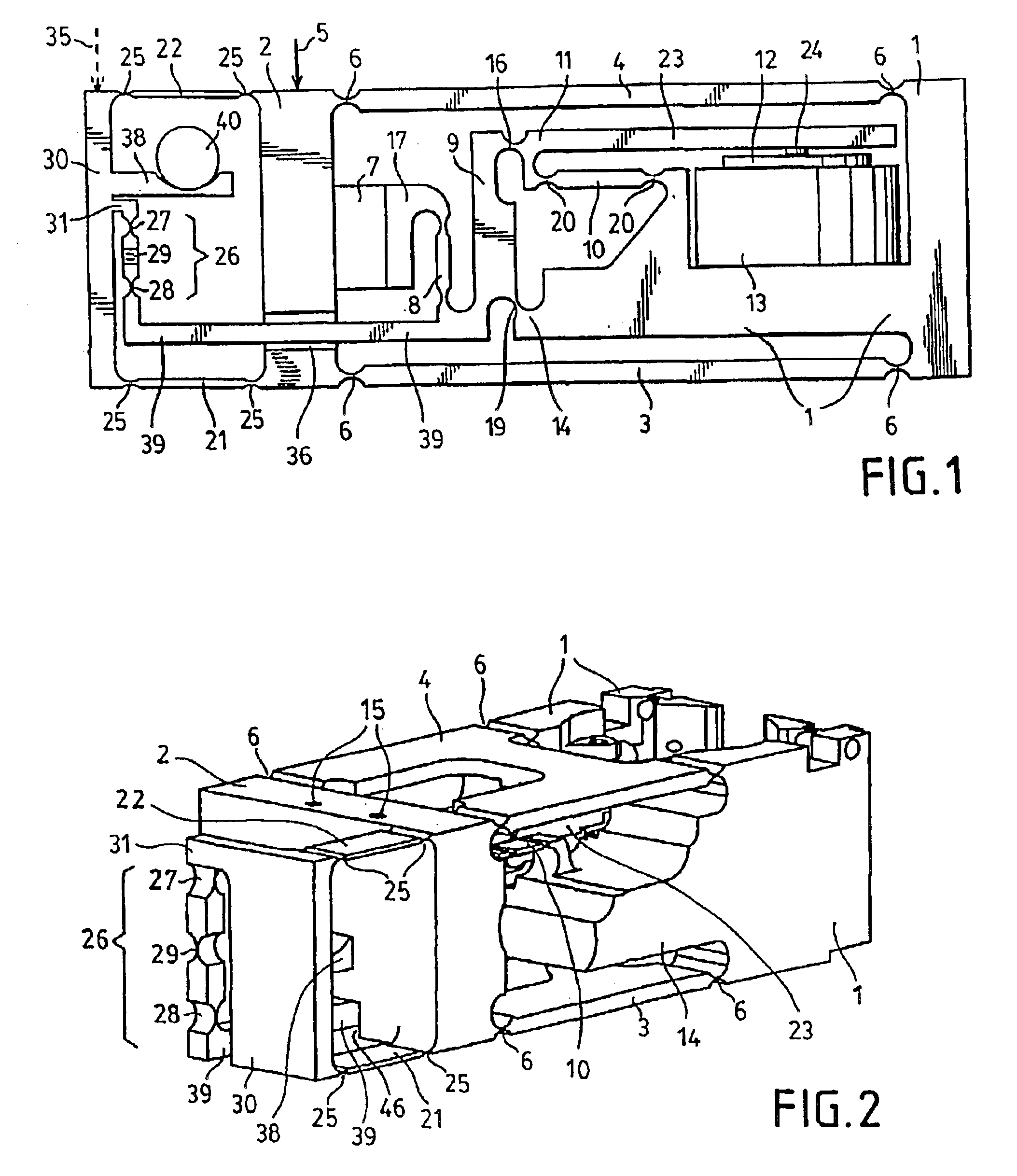Weighing sensor with calibration weight
a weighing sensor and calibration technology, applied in the field of weighing sensors with calibration weight, can solve the problems of reducing the overall height of the weighing sensor, restricting the design options, and occupying a large spa
- Summary
- Abstract
- Description
- Claims
- Application Information
AI Technical Summary
Benefits of technology
Problems solved by technology
Method used
Image
Examples
Embodiment Construction
[0014]FIG. 1 shows a schematic side view of the weighing sensor illustrating the weighing sensor's basic structure. The figure shows a load sensor 2, which is connected to a basic body 1 fixed to the housing via an upper arm 4 and a lower arm 3 in a parallel motion arrangement. The numeral 6 identifies the articulation points of the arms. The weighing pan (not shown) is mounted to the load sensor 2. A vertical arrow 5 indicates the force exerted by the material being weighed. The weight force of the material being weighed is transmitted from a projection 7 / 17 of the load sensor 2 via a first, vertical force transmission element 8 to a rectangular lever 9. The rectangular lever 9 is supported on a projection 14 of the basic body 1 by a thin spot 19. The short, horizontal lever arm of the rectangular lever 9 equals the horizontal distance between the force transmission element 8 and the thin spot 19. The long, vertical lever arm equals the vertical distance between the thin spot 19 an...
PUM
 Login to View More
Login to View More Abstract
Description
Claims
Application Information
 Login to View More
Login to View More - R&D
- Intellectual Property
- Life Sciences
- Materials
- Tech Scout
- Unparalleled Data Quality
- Higher Quality Content
- 60% Fewer Hallucinations
Browse by: Latest US Patents, China's latest patents, Technical Efficacy Thesaurus, Application Domain, Technology Topic, Popular Technical Reports.
© 2025 PatSnap. All rights reserved.Legal|Privacy policy|Modern Slavery Act Transparency Statement|Sitemap|About US| Contact US: help@patsnap.com


